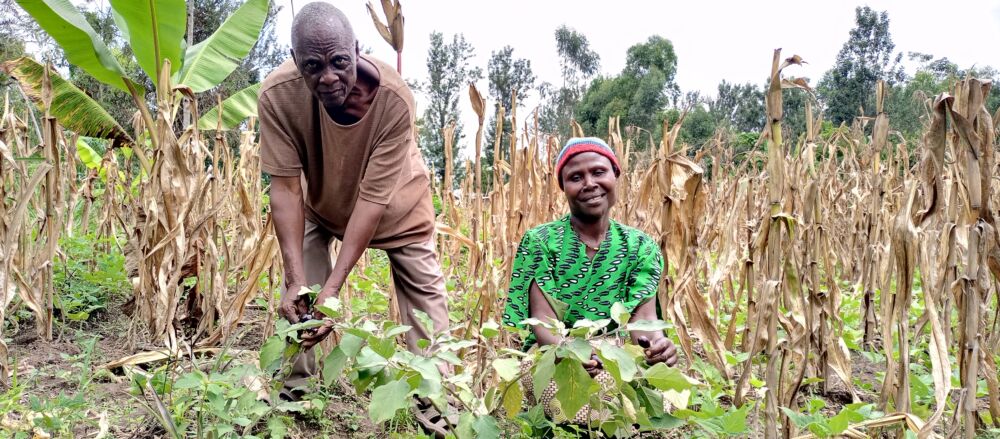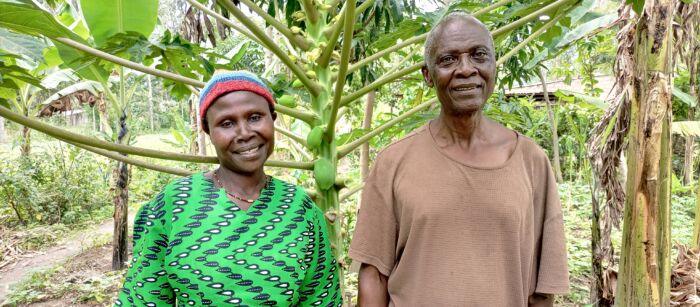Increasing food security through the Kenya Agriculture Carbon Project (KACP)
Date
August 12, 2021
The goal of the Kenya Agriculture Carbon Project (KACP) is to increase farmers resilience to the effect of climate change, increase farm productivity, increase farmers income and reduce greenhouse gas emissions from agriculture.

We caught up with Mary and Kosimas who are beneficiaries of the KACP. They are a couple, aged 48 and 73 respectively. They do not have children, but work together on their two acres of land. The couple entirely depend on farming and are also members of Maina Self Help Group, comprising of 6 women and 6 men, and are affiliated to Bungoma Agricultural Marketing Association.
”For many years, we relied on monocropping of maize, so hunger and poverty were part and parcel of us” says Mary. ”When Vi Agroforestry set foot in our location in 2009, we were hesitant to work with them”, adds Kosimas. When we saw the good teachings they were offering to farmers, we formed our group and was enrolled in their project. This project is Kenya Agriculture Carbon Project (KACP), says Kosimas.
From 2011, when the couple began implementing SALMs on their farm, they witnessed an increase in their farm productivity. They diversified activities and adopted use of compost, terracing, agroforestry, nutrient management, soil and water consevation techniques. These activities improved their farm to produce more food for consumption and income generation.
The couple’s farm has diversified activities. Currently, the family are doing mulching on their beans, to enable retention of moisture and for the soil to get nutrients. The farm has several types of trees, including grevillea, mangoes, and avocadoes. Also on the farm were pawpaws, different types of vegetables, and bananas.